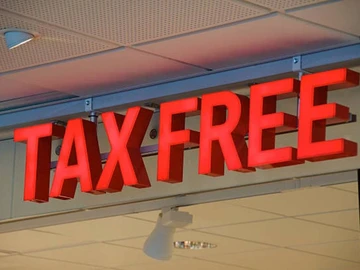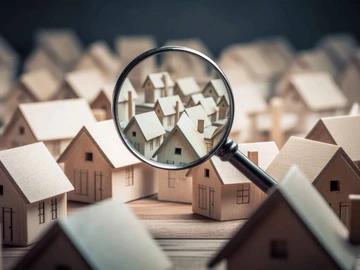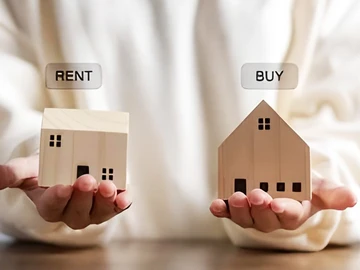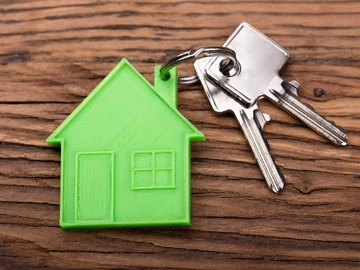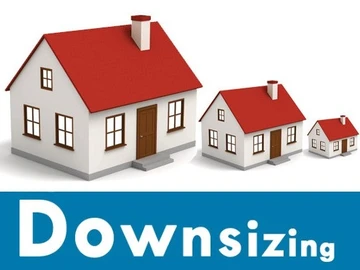The cost of housing in Zimbabwe has been a hot topic for years, with many potential homeowners and renters expressing concerns about the high prices. Whether you're looking to buy a house in Harare, rent a flat in Bulawayo, or invest in property in smaller towns, the perception that houses are expensive is widespread. But why is this the case? In this article, we’ll explore the factors driving the high cost of housing in Zimbabwe, backed by real-life examples and statistics.
1. High Demand for Housing in Urban Areas
Zimbabwe’s urban areas, particularly Harare and Bulawayo, have seen a significant influx of people seeking better economic opportunities, education, and healthcare. This urbanisation has led to a high demand for housing, pushing prices up. For example:
- In Harare’s suburbs like Borrowdale, Glen Lorne, and Chisipite, a 4-bedroom house can cost upwards of $150,000.
- In high-density areas like Budiriro or Kuwadzana, prices are lower but still steep for many, with a 3-bedroom house costing around $50,000 to $80,000.
The demand far outweighs the supply, especially for well-located properties with access to amenities like schools, hospitals, and shopping centers.
2. Rising Construction Costs
Building a house in Zimbabwe has become increasingly expensive due to the rising cost of construction materials and labor. Key factors include:
- Material Costs: Cement, bricks, roofing materials, and finishes like tiles and paint have seen significant price hikes. For instance, a bag of cement that cost $10 in 2020 now costs around $15 to $20.
- Labor Costs: Skilled labor, such as electricians and plumbers, charge higher rates due to inflation and the demand for their services.
- Foreign Currency Dependency: Many construction materials are imported, and fluctuations in exchange rates drive up costs.
As a result, the average cost of building a house in Zimbabwe ranges from $80 to $150 per square meter, making it difficult for developers to offer affordable housing.
3. Limited Access to Affordable Financing
Access to affordable mortgages and housing loans remains a challenge for many Zimbabweans. High interest rates, stringent lending requirements, and the preference for cash transactions in the property market make it difficult for middle- and low-income earners to purchase homes. For example:
- Banks often require large deposits (up to 20-30% of the property value) and charge interest rates of 15% or higher.
- Most buyers rely on personal savings or informal financing, which limits their ability to negotiate better prices.
This lack of accessible financing options forces many to rent or delay homeownership, further driving up demand and prices.
4. Land Scarcity and High Land Prices
Land is a finite resource, and in prime urban areas, it is particularly scarce. The cost of land in desirable locations has skyrocketed, contributing to the high cost of housing. For example:
- A residential stand in Harare’s upscale suburbs can cost between $50,000 and $100,000.
- Even in peri-urban areas, land prices have risen significantly, with stands selling for $20,000 to $40,000.
The high cost of land directly impacts the overall price of housing, as developers pass these costs on to buyers.
5. Inflation and Economic Instability
Zimbabwe’s economic challenges, including inflation and currency instability, have a direct impact on property prices. Inflation erodes the value of local currency, leading to price increases in both construction materials and finished properties. For example:
- In 2023, the annual inflation rate in Zimbabwe was over 100%, causing prices to double within a short period.
- Property sellers often peg prices in USD to hedge against inflation, making homes unaffordable for many locals.
6. High Cost of Infrastructure Development
One of the most significant factors driving up housing costs in Zimbabwe is the high cost of infrastructure development. In many cases, the government has failed to take ownership of developing essential public goods such as sewer systems, water reticulation, roads, and electricity connections. This responsibility often falls on developers, who then pass these costs on to homebuyers. Here’s how this plays out:
Government Shortfalls in Infrastructure Development
- Lack of Investment: The government has historically underinvested in urban infrastructure, particularly in new housing developments. This leaves developers to fund and build critical systems like sewage treatment plants, water supply networks, and road networks.
- Bureaucratic Delays: Even when the government is involved, bureaucratic inefficiencies and delays can stall projects for years, forcing developers to step in to keep projects moving.
- Focus on High-Density Areas: Government infrastructure projects often prioritize high-density urban areas, leaving peri-urban and new developments underserved.
How Developers Bear the Burden
To make new housing developments habitable, developers are forced to take on the role of providing infrastructure, which includes:
- Sewer Systems: Building and maintaining sewage treatment plants and reticulation systems.
- Water Reticulation: Drilling boreholes, installing water tanks, and laying pipelines to ensure a reliable water supply.
- Roads and Electricity: Constructing access roads and negotiating with power providers to install electricity lines.
These costs are substantial. For example, developing infrastructure for a medium-sized housing project can add $10,000 to $20,000 per stand or house. These expenses are inevitably passed on to buyers, making homes even more expensive.
Real-Life Example: Peri-Urban Developments
Take the case of Pomona, a peri-urban area in Harare. In a recent housing development, the government failed to provide water and sewer systems. The developer had to drill boreholes and build a sewage treatment plant, adding $15,000 to the cost of each house.As a result,a modest 3−bedroom house that could have cost $40,000 ended up selling for $55,000, putting it out of reach for many potential buyers.
The Ripple Effect on Affordability
- Increased Property Prices: The added infrastructure costs significantly inflate the final price of homes.
- Limited Affordable Housing: Developers are less inclined to build low-cost housing because the infrastructure costs eat into their profit margins.
- Buyer Reluctance: High prices deter potential buyers, slowing down sales and further straining the housing market.
What Needs to Change?
For housing to become more affordable, the government needs to take a more active role in infrastructure development. This includes:
7. Perception vs. Reality
While houses in Zimbabwe are undeniably expensive, the perception of high prices is also influenced by:
- Comparisons to Regional Markets: Many Zimbabweans compare local property prices to those in neighboring countries like South Africa or Zambia, where housing may be more affordable due to larger economies and better access to financing.
- Income Disparities: The average income in Zimbabwe is relatively low, making even moderately priced homes seem expensive. For example, a $50,000 house may be affordable in other countries but out of reach for many Zimbabweans earning an average salary of $200 to $500 per month**.
Real-Life Example: The Harare Housing Market
Take Tinashe, a Harare-based professional earning $500 per month.He’s been saving for years to buy a 3−bedroom house in Budiriro,which costs $60,000. Despite his efforts, the rising cost of living and inflation make it nearly impossible for him to afford the property without external help. Tinashe’s story is a common one, highlighting the gap between housing prices and average incomes.
Conclusion
The perception that houses in Zimbabwe are expensive is rooted in a combination of high demand, rising construction costs, limited financing options, and economic instability. While the government and private sector are working to address these challenges through initiatives like affordable housing schemes, the road to accessible homeownership remains long.
At Property.co.zw, we understand the challenges of finding affordable housing in Zimbabwe. Whether you’re buying, selling, or renting, we’re here to help you navigate the property market with confidence. Explore our 8,000+ verified listings and connect with 200+ trusted agents to find your dream home today!
 Continue with Facebook
Continue with Facebook
 Continue with Email
Continue with Email





